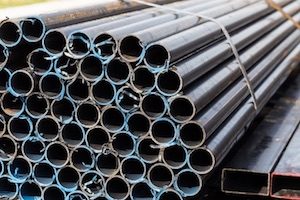On September 11, 2020, the U.S. Department of Commerce International Trade Administration published a final rule modifying its regulations pertaining to the Steel Import Monitoring and Analysis (SIMA) System. These changes include requiring steel import license applicants to identify the country where the steel used in the manufacture of the imported steel product was melted and poured, and also increases the “low value” license threshold to $5000.00. Commerce also announced it is modernizing the SIMA system, including both the online license application platform and the public SIMA monitor.
The Steel Import Monitoring and Analysis (SIMA) System was an outgrowth of the steel safeguard tariffs introduced by under President George W. Bush in 2002. While steel import data is already collected by the Bureau of Census (along with all other imported merchandise) the purpose of the program was to permit the accelerated gathering and reporting of data regarding steel imports in order to detect import surges from countries excluded from the tariff in nearly real-time so the public could be fully informed. Under the SIMA system, statistical data on steel imports entering the United States can be reported five weeks earlier than would have been otherwise available.
Under the program all steel mill imports into the United States require an entry-specific import license issued by the SIMA office for the entry summary. Importers and customers/brokers must use the International Trade Administration (ITA) website to register, apply for, and receive licenses prior to completing their Customs entry documentation.
The licensing requirements apply to “basic steel mill products” which include most types of commodity type steel found in Chapters 72 and 73 of the HTS. In general, the licensing requirements do not apply to fabricated items or steel products that have been subject to further manufacture. A full list of products that require licensing can be found at:
https://enforcement.trade.gov/steel/license/SMP_byHTS.pdf
Previous data elements collected via the licensing requirements include identification of the commodity type, HTS, importer and exporter, as well as the manufacturer name and country of origin. However to address concerns related to the possible transshipment of steel products otherwise subject to section 232 safeguard tariffs through exempted countries like Canada and Mexico, the U.S. steel industry secured changes to go into effect October 13, 2020 that now requires the identification of the “Country where the steel used in the manufacture of the product was melted and poured”. Specifically, the license applicant is required to identify the original location where the raw steel is (1) first produced in a steel-making furnace in a liquid state, and then (2) poured into its first solid shape.
In many cases, steel commodity products pass through several hands during the process of distribution and sale. Basic steel products like blooms and billets produced in the mill where they were melted and poured, may be further produced into many different downstream products by different manufacturers and it is possible the original mill certificate identifying the country of melt and pour does not get passed along in the process. For many importing purchasers, especially purchasers of small to mid-size quantities of products that frequently purchase quantities of products that represent less than a full heat of melted and poured steel, identification of the actual country of melt and pour can be difficult in best cases and nearly impossible in others.
In order to meet the licensing requirements the importer must secure the cooperation of its off shore supplier to provide the melt and pour information, in addition to country of origin, which already must be supplied and to date has otherwise been satisfactory for other safeguard purposes. The off-shore supplier then may have to request this information from its up-stream supplier, etc. Unless the U.S. importing customer can persuade its supplier to track down this information this can place the import transaction in jeopardy as the steel licenses with all necessary information are required by U.S. Customs and Border Protection for filing entry summary documentation. In this way the new melt and pour reporting requirements can result in a potential barrier for certain importers arising under a program whose sole stated intent is to expeditiously monitor and report steel import data.
The rule modifications also provide some relief for importers of small quantities of steel that might be particularly impacted by the country of melt and pour requirement, which is the codification of a $5000.00 low value license threshold. Country of melt and pour will not be required on these low-value, reusable licenses. Commerce’s current practice since 2010 has been to not track steel imports under $5000.00 in value. However, in response to industry comments opposing the codification of the increase in the low value threshold, Commerce has stated that it will monitor the use of the $5000.00 low value licenses for potential overuse, and revisit the $5000.00 maximum if warranted.
The final rule published September 11, 2020 can be found at: https://www.federalregister.gov/documents/2020/09/11/2020-19753/steel-import-monitoring-and-analysis-system.

























